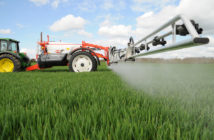Farmers from across AHDB’s Monitor Farm programme are investigating how different spring barley varieties perform under different conditions.
Groups from the Monitor Farm programme will look at heritage and modern UK spring barley varieties grown alongside varieties from Sweden and Finland in four locations across the UK from Shetland, Cornwall, Hampshire and Northern Ireland.
The aims are twofold – firstly to look at the resilience of different varieties grown in different conditions in the UK and secondly to challenge growers to get the most out of their crops.
Emily Smith, AHDB Knowledge Transfer Manager, said: “We chose Fairing because it is the earliest of the new varieties, has some of the strongest agronomic features and serves as a baseline for modern genomes.
“Today’s modern varieties are achieving yield through increasing the growing period, which has significant issues for farmers growing in extreme conditions in marginal areas. We want to see how new genetics compare to old genetics, such as Golden Promise, by kind permission of McCreath Simpson and Prentice.”
Emily and the team chose the Swedish and Finnish varieties – Anneli and Brage – in collaboration with the Agronomy Institute at Orkney College, University of Highlands and Islands. These two varieties were chosen as other north European cereal varieties have been grown in challenging conditions in recent years, including Shetland, and have been largely successful due to their early maturity.
The project began by taking baseline assessments of soil conditions, current varieties and crop performance.
“With the Monitor Farm network giving us full coverage of the UK,” Emily said, “we have the potential to do valuable testing across the full range of environmental conditions experienced by our farmers. Too often, technical advances are dismissed because they are not perceived to be relevant to a particular area and we need to address this if we are to help the industry innovate and move forward.”
Each site in the investigation will grow around 0.4ha each of Golden Promise, Fairing, Anneli and Brage for harvest 2018. Farmers will monitor the crop, measuring a broad list of agronomic and harvest information.
Throughout the investigation the monitor farmers and AHDB staff will be looking at a range of parameters: variety choice, growing conditions, disease resistance, fungicide performance, establishment, weed pressure and yield.
Shetland Monitor Farmers Kirsty and Aimee Budge grow approximately 25ha of Propino and Waggon spring barley at Bigton Farm on the South Mainland.
Kirsty said: “We are interested in looking at alternative varieties to increase yields but also withstand Shetland’s weather which is our biggest challenge. We usually sow in April and in 2017 the barley was harvested at a grain moisture ranging from 19 to 25 per cent – this was good given the unsettled weather. In 2016 the moisture was as high as 30 per cent.”
The UK-wide project will also bring together existing research projects and events – such as the Barley Mutants Workshop in June 2018 – covering different tillage systems, varieties and heritage varieties, in order to determine their application in a commercial environment.
Monitor Farms
AHDB Monitor Farms bring together groups of like-minded farmers who wish to improve their businesses by sharing performance information and best practice around a nationwide network of host farms. AHDB organises and facilitates Monitor Farm meetings for farmers, who own and operate the scheme – by farmers, for farmers. Monitor Farms are part of the AHDB Farm Excellence Platform. The Farm Excellence Platform inspires industry to improve performance and succeed through farmer-to-farmer knowledge exchange
The nine Monitor Farms in Scotland are run jointly with Quality Meat Scotland (QMS) with funding from the Scottish Government.
Monitor Farm benchmarking groups use Farmbench – AHDB’s new whole-farm benchmarking tool. For more information, visit farmbench.org.uk.
To find your nearest Monitor Farm visit cereals.ahdb.org.uk/monitorfarms.




